The fortnight at a glance
- Glaucous-winged Gull in Cleveland
- Steller's Eider in Gwynedd
- Canvasback in Argyll
The holiday period was generally a pretty chilly one, with some ultra-hard frosts and very low temperatures recorded, especially at the start of 2009, but the cold conditions did little to deter birders from getting out and about to enjoy a mass of high-quality rarities. A surprising and wholly unexpected British "second" led the way, to ensure that the New Year took off in the most thrilling fashion.

Glaucous-winged Gull, Cowpen Bewley, Cleveland (Photo: Martyn Sidwell)
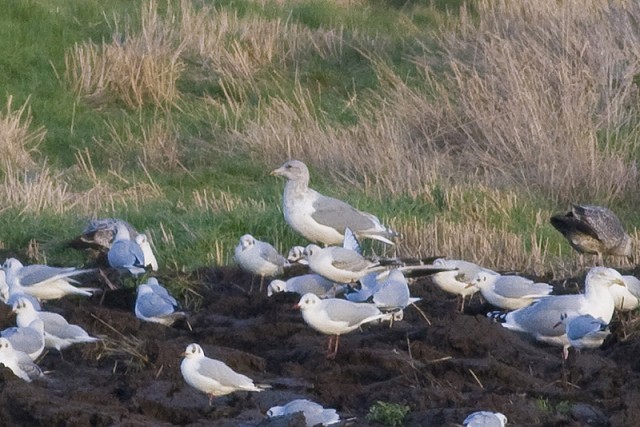
Glaucous-winged Gull, Cowpen Bewley, Cleveland (Photo: Martyn Sidwell)
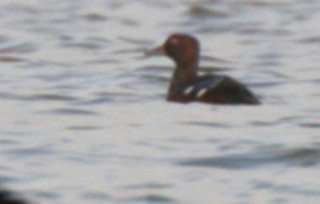
Steller's Eider, Morfa Nefyn, Gwynedd (Photo: pp Steve Culley)
The stunning adult Glaucous-winged Gull found at Saltholme Pools (Cleveland) on 31st took a little while to come to the attention of the birding world. Seen late on in the final birding hours of 2008, the bird was photographed and posted to the Teesmouth Bird Club website where comment was invited on the "grey-winged gull" seen on the soon-to-be opened new RSPB reserve. On January 1st, a few local birders saw the bird in a ploughed field close to the sizeable landfill site at Cowpen Bewley; New Year's Day evening found more and more people becoming aware of the images and it was becoming apparent that this was a bird that had to be looked for. By mid-morning on 2nd, the bird had been seen by the 100 or so people who decided that the evidence was good enough to warrant a trip to Teesside and all went home delighted — the bird was indeed an adult Glaucous-winged Gull and, as it lacked the distinctive red "BAP"-inscribed blue ring of the bird seen in Gloucestershire, Carmarthenshire and London in 2006 and 2007, this was indeed Britain's second record of a quite remarkable vagrant. The bird showed well from time to time on 2nd and again for long periods on 3rd, delighting hundreds of birders, many of whom had missed the previous bird once, twice and even three times. With no activity around the tip on 4th, it was no surprise that the bird was absent, and it wasn't until 6th that the bird reappeared, taking in several locations in the Cowpen Bewley area, with a repeat performance on 7th. Visitors to this Larophile's heaven (and many birders' vision of hell) could also enjoy a couple of Glaucous Gulls and a fine adult Caspian Gull (with a third-winter there on 5th). Taking the runners-up spot in yet another sensational start to a New Year was the female Steller's Eider seen on 3rd–4th off Morfa Nefyn. Discovered by a one-time birder turned golfer, the bird was photographed and images sent to the Anglesey recorder. It didn't take long for the identification to be made, but a brief late-afternoon search on 6th (the day the photos were first seen) proved fruitless. This first for Wales was the first occurrence of this still desperately rare duck since the three-day bird near Burghead (Moray) in November 2000. The third outstanding rarity of the holiday fortnight was the female Canvasback found at Loch Indaal, Islay (Argyll) on 6th, remaining to 7th. Only one other female Canvasback has ever been seen in the UK: that one was on Sanday (Orkney) from 21st–23rd June 2000 and this bird follows hot on the heels of the drake in North Yorkshire, present for single days in October and November last year.

White-billed Diver, John O' Groats, Highland (Photo: Karen Munro)
A couple of White-billed Divers were seen in the first days of 2009. One was at Kirkabister, Mainland (Shetland) on 1st, with a winter adult in the harbour at John O'Groats (Highland) on 2nd–3rd (could it have been the South Ronaldsay bird?). Much more of a surprise was the Great Shearwater that was off Filey Brigg (North Yorkshire) on 29th. Initially seen from the seawatching hide, the bird was then noted off the Brigg itself for some 30 minutes. A single Balearic Shearwater was seen from Porthgwarra (Cornwall) on Christmas Day, with another off Portland Bill (Dorset) on 7th, while a Sabine's Gull was reported at Holcombe (Devon) on 25th. Single Pomarine Skuas were noted in Kent and Suffolk during the fortnight and Little Auks included eight in Yell Sound (Shetland) on 27th and a single bird off Marazion (Cornwall) on 4th.

Cattle Egret, Dorchester-on-Thames, Oxfordshire (Photo: Stephen Burch)
Mirroring (to an extent) the events of this time last winter, a number of Cattle Egrets were recorded over the holiday period, many in locations that hosted birds during the 2007–08 invasion. Starting in the far southwest, five birds were on Tresco (Scilly) on 29th with another on St. Martin's the same day. Two birds were still on Tresco to 2nd and on 3rd, and one was seen on St. Mary's, with two there on 5th–7th. Three birds were noted on St. Martin's on 4th. In Cornwall, a single bird was seen at Crantock on 24th, heading to the Gannel Estuary to roost later the same day, remaining there to 5th, when four birds were seen. Singles were seen at Polgigga on 29th and Paul on 30th, when two birds were seen at Halsetown (these remaining to 4th at least). On 1st January, three birds were at Sancreed and two were at Tregunna, near Padstow, on 2nd, followed by two at Sennen and Trenance on 4th. By 6th, half a dozen birds were being seen around the Polgigga area. In Devon, a single Cattle Egret was on Exminster Marshes on 2nd, with four by the Kingsbridge Estuary on the same date, rising to eight the following day. On 6th, a single Cattle Egret was seen around South Milton and Thurlestone and on 7th, it was two birds each for Powderham and West Charleton Marsh. Six birds were at Walton (Somerset) on 24th with two birds remaining to 2nd. Single birds were seen in Dorset on 3rd at East Holme and Abbotsbury and in Hampshire, and singles were at Selbourne on 29th and St. Leonard's Grange on 3rd and 7th. In Oxfordshire, the bird at Dorchester-on-Thames remained in place from 30th–3rd, while in Essex, a lone bird was at Abberton Reservoir from 3rd–5th. Away from southern England, single Cattle Egrets were seen in Lancashire, reported at Hapton on 25th, and Cheshire, where one was in Delamere Forest on 4th. In Wales, Pembrokeshire was the only county to hold any Cattle Egrets and it was hard to know just how many birds were present. Seven different localities hosted birds over the past fortnight, with five at Trefasser on 25th–27th the highest count (three birds remained there to 29th). Cold-weather dispersal of this group may have accounted for birds elsewhere in the county, with 2009 singles at Castlemartin and Marloes on 1st and Carnhedryn on 4th. In Ireland, County Cork dominated proceedings; six birds roosted at Inchydoney Island on 31st, remaining in the general area to 7th. Further birds in Cork included birds at Great Island and Belvelly on 3rd, at Curraheen on 4th, singles at Rossmore and Rosscarbery on 5th, with two at Timoleague to the same date (remaining to 6th). Two birds were at Rossmore on 6th and two were at Bohonagh on the same date (up to five were present here this time last year). Three birds were at Stradbally, Drumlohan (Co. Waterford) on 30th–2nd (with two there to 5th), with a single bird at Annestown on 31st–5th.
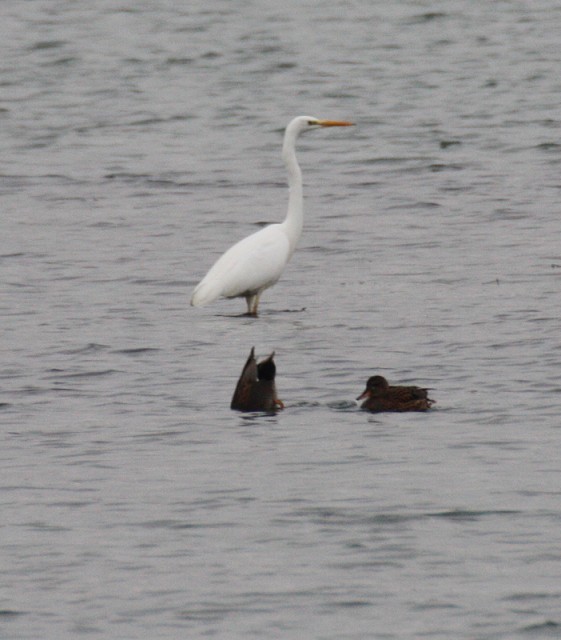
Great White Egret, Blashford Lakes HWT, Hampshire (Photo: Delhawk)

Spoonbill, Radipole Lake RSPB, Dorset (Photo: Phil Stidwill)

Night Heron, Hythe, Kent (Photo: Corinna Smart)

Common Crane, Waxham, Norfolk (Photo: Chris Upson)
The Great White Egret remained around Blashford Lakes (Hampshire) off and on from 26th–6th, with further singles reported at Glasson (Lancashire) on 28th, The Brooks (East Sussex) on 31st, Capel (Surrey) on 3rd, Welney (Norfolk) on 5th and Shapwick Heath (Somerset) again on 6th. Six Spoonbills remained around Isley Marsh (Devon) throughout the fortnight and 12 birds were seen in Poole Harbour (Dorset) on 7th. Quite how many birds have been at large in Dorset is tough to call, as on 3rd nine birds were at Middlebere (near Poole Harbour) then eight birds were seen at The Fleet (at Little Sea) with (presumably) the same group (joined by another!) appearing at Lodmoor, before flying off east. Two birds remained around the River Tamar (Cornwall), and others were at Cliffe Pools (Kent) to 1st, on Samson (Scilly) to 2nd and at Moore Nature Reserve (Cheshire) on 7th. Single Spoonbills in Wales were seen at the National Wetlands Centre (Carmarthenshire) on 2nd and at Gorseinon (Glamorgan) on 4th. The wintering adult Night Heron was present from 24th–4th along the Royal Military Canal at Hythe (Kent) while Common Cranes (away from the Norfolk Broads) included two still at Eldernell (Cambridgeshire) from 26th–31st, four at Lyndhurst (Hampshire) on 27th, three over Barnham (Suffolk) on 30th and two remaining at Lakenheath (Suffolk) to 2nd at least. The highest count from the Broads was of 24 birds, seen near Horsey on New Year's Day. The only Glossy Ibis of the fortnight was seen at the Forgotten Corner, Tacumshin (Co. Wexford) on 26th. On 3rd, a Spotted Crake was reported calling at Warren Gorge (Essex), the bird apparently present for a fortnight or so, but there was no sound on 4th.
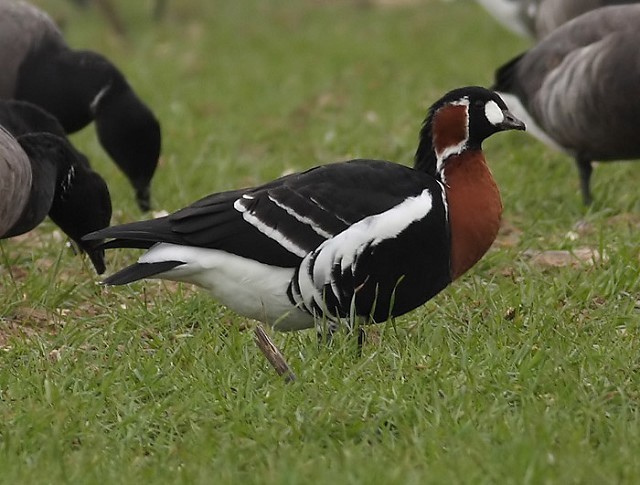
Red-breasted Goose, Keyhaven Marshes, Hampshire (Photo: James Packer)
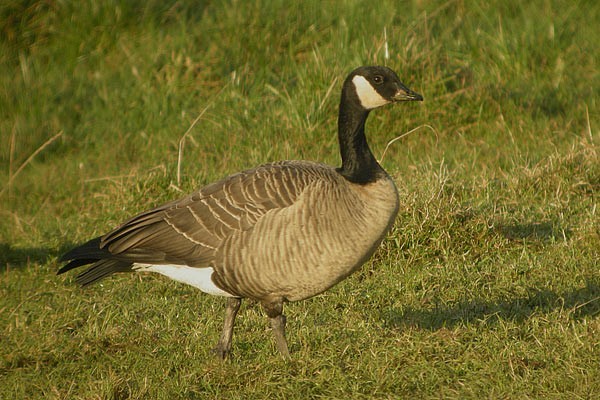
Taverner's Canada Goose, Caerlaverock WWT, Dumfries & Galloway (Photo: Tristan Reid)

Snow Goose, Martnaham Loch, Ayrshire (Photo: Brian Orr)
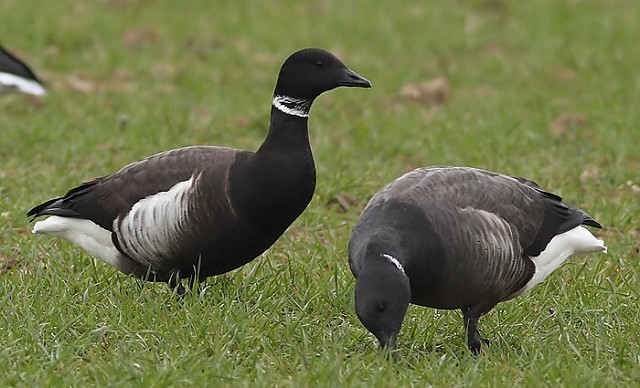
Black Brant, Keyhaven Marshes, Hampshire (Photo: James Packer)
The adult Red-breasted Goose remained around Keyhaven Marshes (Hampshire) to 7th. In Scotland, a Cackling Canada Goose was seen at Redkirk Point (Dumfries & Galloway) on 27th (one was seen here on 8th October) and it (or another) was at Caerlaverock from 28th–6th, along with the Taverner's Canada Goose on the same dates. A Richardson's Canada Goose was at Aberlady Bay (Lothian) on 28th–29th with another still on Berneray (Outer Hebrides) on 2nd (and a Richardson's was reported at Caerlaverock on the same day, with a "small Canada Goose" there on 5th). The adult Ross's Goose remained around the area of the Halvergate Marshes and Acle (Norfolk) from 26th–2nd (also heading up to Caister-on-Sea on 2nd), while Snow Goose records came from Martnaham Loch (Ayrshire) from 24th–29th, with further records for the county coming from Ayr on 29th and 2nd, Loans on 1st, again at Martnaham Loch on 3rd and 5th, and at Maybole on 4th. In Argyll, the returning wintering Snow Goose at Craobh Haven was seen on 1st–6th and another white-morph bird was at Loch of Strathbeg (Aberdeenshire) on 3rd. In Ireland, the white Snow Goose remained at the North Slob WWR (Co. Wexford) throughout the holidays. Several Black Brants were noted during the fortnight, including at least four birds in Norfolk (at Titchwell, Cockthorpe Airfield and two around Wells and Holkham, along with several hybrids). Two adults were seen around the Fleet (Dorset) to 6th, and at least two singles were in Hampshire: around Keyhaven Marshes into the New Year and at Gosport and Farlington Marshes to 4th. A Black Brant was at Church Norton (West Sussex) from 26th–2nd, with further singles at Old Hall Marshes (Essex) on 28th, Reculver (Kent) on 2nd and Inishcrone (Co. Sligo) on 5th.
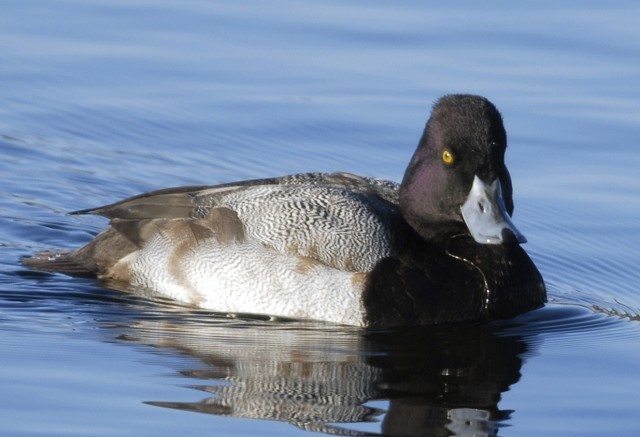
Lesser Scaup, Cosmeston Lakes CP, Glamorgan (Photo: anon)

Ring-necked Duck, Bordon, Hampshire (Photo: Chris Thomas)

Ferruginous Duck, Whisby Pits NR, Lincolnshire (Photo: Russell Hayes)

American Wigeon, Caerlaverock WWT, Dumfries & Galloway (Photo: Brian Henderson)
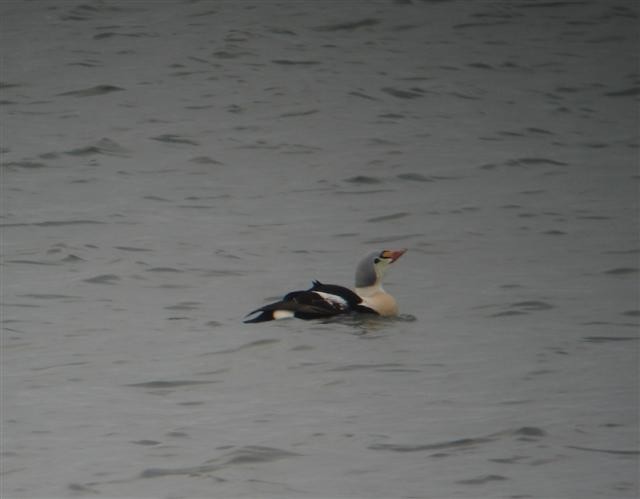
King Eider, Kincraig Point, Fife (Photo: David Dack)
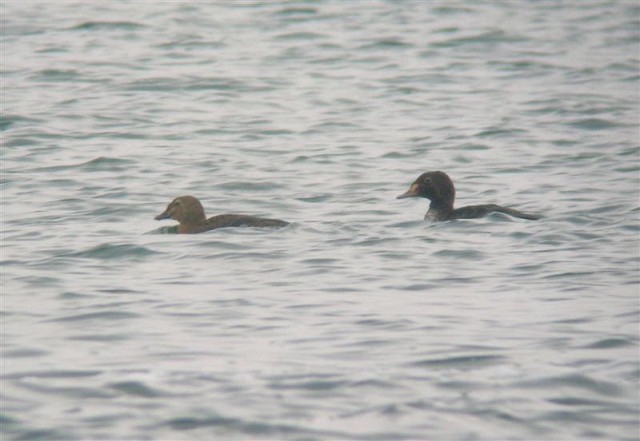
King Eider, Lissadell, Sligo (Photo: Gavin Thomas)
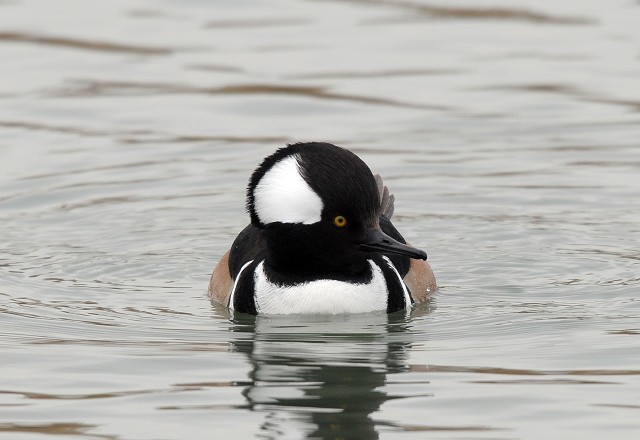
Hooded Merganser, Radipole Lake RSPB, Dorset (Photo: Jon Evans)
Drake Lesser Scaup continued to be seen at Stourhead (Wiltshire), Hogganfield Loch (Clyde) and Holme Pierrepoint (Nottinghamshire) to 29th, 31st and 6th respectively. On Boxing Day, a first-winter drake was found at Cosmeston Lakes (Glamorgan), remaining to 2nd before moving to Cardiff Bay on 3rd–7th. In Northern Ireland, the female Lesser Scaup was still on Clea Lakes (Co. Down) on 28th, while a (curious-looking) first-winter drake was at the Racecourse Lough (Co. Fermanagh) from 26th–3rd. In the Republic of Ireland, drakes were seen at Lough Arrow (Co. Sligo) from 24th–27th, at Lough Owel (Co. Westmeath) on 1st and at Lough Fern (Co. Donegal) on 2nd. The regular wintering drake Ring-necked Duck remained at Foxcote Reservoir (Buckinghamshire) to 7th when a new drake was found at Boultham Mere (Lincolnshire). The first-winter drake remained at Frithend Sand Pit and then at Bordon (Hampshire) to 7th. In Scotland, the female Ring-necked Duck was again at Martnaham Loch from 29th–6th and a drake was at Loch an Eilein, Tiree (Argyll) on 31st. In Wales, a drake was found at Cwm Rheidol Reservoir (Ceredigion) on 4th, remaining to 6th. Irish Ring-necked Ducks included single drakes at Cornabrass Lough (Co. Fermanagh) from 27th–3rd, Carrowmore Lake (Co. Mayo) on 28th and Lough Fern in Donegal on 29th, with females on The Gearagh (Co. Cork) on 24th–27th and Lough Corrib (Co. Galway) on 3rd. Single drake Ferruginous Ducks were found at Westbere GPs (Kent) on 29th, Girton Pits Complex (Nottinghamshire) on 3rd and Eagle Lane GPs (Lincolnshire) on 5th–6th. The drake Black Duck was seen again at Ventry Harbour (Co. Kerry) on 29th, while drake American Wigeon were at Lower Farm Gravel Pits (Berkshire) from 24th–3rd and Caerlaverock from 2nd–5th. At least 20 Green-winged Teal were noted during the past two weeks, with five birds in mainland Scotland, three on Scottish islands (including two on the Outer Hebrides), up to three birds in Lancashire, six in Ireland (including two at Tacumshin in County Wexford on 26th) and a single bird in Wales (at Ynys-Hir in Ceredigion) on 4th. After a spartan few months, the past fourteen days has seen a distinct upturn in the numbers of Surf Scoters recorded. Familiar birds included females at Dawlish Warren (Devon), Hough Bay, Tiree (Argyll) and Galway City, along with a drake in Lower Largo bay (Fife). New birds noted were drakes off Kincraig Point (Fife) and Inganess Bay, Mainland (Orkney), both on 27th, and single drakes off Harlech (Gwynedd) and Inny Strand (Co. Kerry) on 29th. A new drake was seen on Orkney, off the airport at Kirkwall on 31st, a drake was briefly alongside the female at Dawlish Warren on 2nd, and a first-winter drake was off Beer (Devon) on 4th–7th. Topping the list though were the five Surf Scoters seen in the Sound of Taransay (Outer Hebrides) on 3rd. A second-winter drake King Eider was found off Kincraig Point on 25th, remaining to 7th, and another drake was in Mousa Sound (Shetland) on 1st. In Ireland, an adult female and first-winter drake King Eider were an excellent find in Drumcliffe Bay, near Lissadell (Co. Sligo) on 3rd, both birds remaining to 5th. Down in Dorset, the drake Hooded Merganser at Radipole Lake (Dorset) made it to 2009 — still present to 7th and still causing a little bit of debate as to where it really came from....
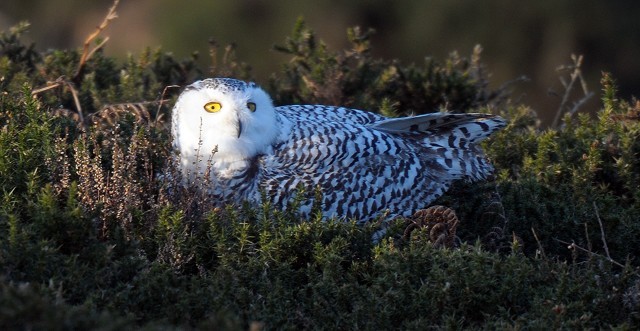
Snowy Owl, Zennor, Cornwall (Photo: Jon Evans)
In Cornwall, the popular young male Snowy Owl remained at Zennor until 7th and, for the second time in almost as many months, the behaviour of some photographers has again been called into question. A second bird, another juvenile, was found injured at Foxford in County Mayo on 31st but, sadly, the bird's injuries were severe and it had to be put down. On Scilly, the Gyrfalcon was seen on St. Martin's and Tresco on 27th (staying around the latter island until 29th before appearing over nearby Bryher on the same date). The bird was back on Tresco on 30th and on New Year's Day it was on Samson, where it was seen again on 3rd, before heading to St. Mary's on 4th. On Shetland, a probable dark-morph Gyr was seen near Cullivoe, Yell.
Wintering Rough-legged Buzzards remained at Harty Marshes and Capel Fleet, Isle of Sheppey (Kent), around Millington (East Yorkshire), near Coveney (Cambridgeshire) and at Farforth (Lincolnshire) off and on throughout the holidays. A Rough-legged Buzzard was reported as still being present at Leighton Moss (Lancashire) on 26th and, in the same county, one was seen at Newton-with-Scales on 28th. Also on 28th, one was seen at Scaling Dam Reservoir on the Cleveland/North Yorkshire border. On 2nd, a new bird was seen at Worlaby Carrs (Lincolnshire) and on 3rd a Rough-legged Buzzard was reported from Falmouth (Cornwall), apparently present in the area for five days. The 4th saw two more new arrivals appear, at Gringley Carr (Nottinghamshire) and Cheswick (Northumberland).
The Long-billed Dowitcher at Dundalk (Co. Louth) to 5th and two Grey Phalaropes seen off Portscatho (Cornwall) on 27th were, somewhat remarkably, the only wader species of note reported during the whole of the Christmas and New Year period.

Iceland Gull, Reenard Point, Kerry (Photo: Richard Bonser)

Glaucous Gull, Salthouse, Norfolk (Photo: Chris Cook)

Ring-billed Gull, Helston, Cornwall (Photo: Phil Stidwill)
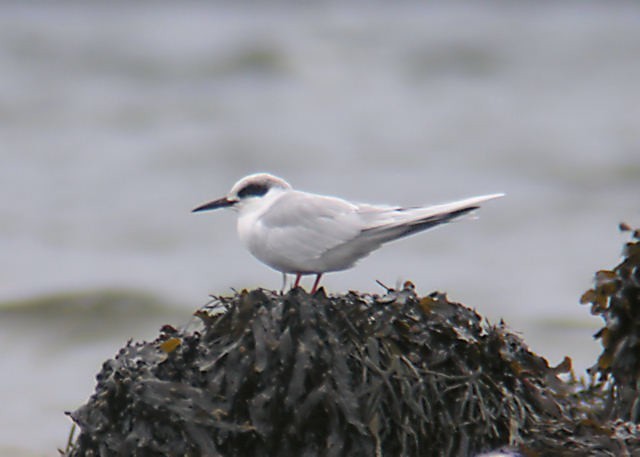
Forster's Tern, Nimmo's Pier, Galway (Photo: Ronan Mclaughlin)
In County Cork, a second-winter American Herring Gull was found in Bantry Bay on New Year's Day (and was seen again on 6th) while the adult was seen again at Galway Docks on 24th and 7th and at Nimmo's Pier on 30th. The cold continental weather presumably had a bearing on the number of Caspian Gulls seen around the country in the past fortnight, with at least 60 birds reported. Birds were spread from Cleveland, Lancashire and Shropshire down to East Sussex and Hampshire. Up to six birds were seen around London, five birds were reported from Kent, and four birds (an adult and three first-winters) were seen at Ditchford GPs (Northamptonshire) on 4th–5th. Numbers of Iceland Gulls soared during the holidays, with at least 80 birds in Britain and a further 54 or more reported in Ireland. Nine birds were at the Shetland Catch, Lerwick (Shetland) on 27th (as many as 16 birds were seen around Shetland in the last fortnight) and five birds were seen at Mallaig (Highland) on 26th. In Ireland, several groups of three and four were noted, and seven birds remained at Castletown Bearhaven (Co. Cork) on 27th, with five at Nimmo's Pier (Co. Galway) on 31st. Four definite Kumlien's Gulls were seen: a juvenile was at Bantry (Co. Cork) on 26th, an adult was again at Farmoor Reservoir (Oxfordshire) on 1st, a juvenile was at Forfar Loch (Angus) on 3rd–4th and a third-winter bird was at Clifden (Co. Galway) on 5th. Decent numbers of Glaucous Gulls were seen in the past two weeks; at least 60 birds were noted in Britain with a further 10 or so over in Ireland. As many as 10 birds were recorded around the Outer Hebrides and at least nine were seen on Shetland, with four birds at Sand, Mainland on 29th. On Orkney, four juveniles were seen at Marwick on 6th. In Suffolk, the Svalbard-ringed juvenile Glaucous Gull remained into the New Year, often appearing at Minsmere. The excellent winter showing of Ring-billed Gulls got better and better over the Christmas period: a total of at least 40 birds were reported, with 26 or more seen in Ireland, 12 of which were in County Cork, including three at Cuskinny Marsh on 24th, three at Clonakilty on 28th and two (both youngsters) at Bantry on 30th–6th. A further eight Irish counties scored, with three adults at Nimmo's Pier from 27th–31st and four birds in County Antrim including two still at Six Mile Water on 24th. Scotland managed four birds, with two in Wales (the regular second-winter joined by a first-winter at Lamby Lake in Glamorgan on 5th–6th). In England, two first-winter birds were at Helston (Cornwall) from 27th–5th and notable singles were seen off New Passage (Gloucestershire) on 27th, when others were seen at Gowy Meadows (Cheshire) and at Carr Vale (Derbyshire) briefly on 5th. The adult Forster's Tern was seen off Nimmo's Pier from 28th–4th at least.
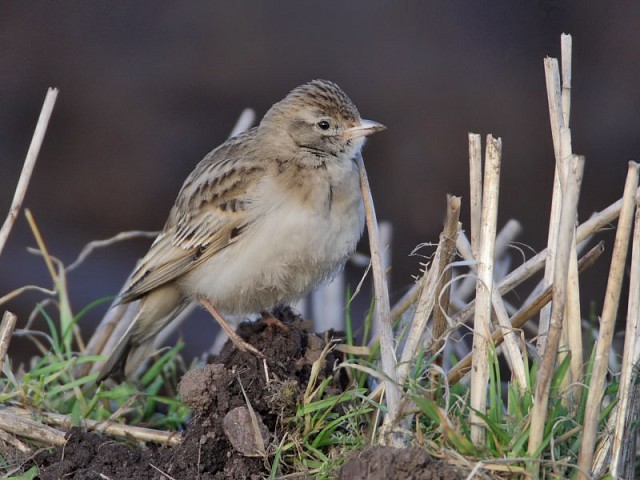
Short-toed Lark, Arbroath, Angus & Dundee (Photo: John Anderson)
In Highland, a male Desert Wheatear was on the beach at Balnakeil from 24th–28th, while, still in Scotland, a Short-toed Lark was an excellent find at Arbroath (Angus) on 2nd, the bird remaining to 6th. The Richard's Pipit at Parkgate Old Baths, Neston (Cheshire) was still present to 26th and was reported again on 28th. On 5th, a Richard's Pipit was reported from Heswall Golf Course (Cheshire) and on 7th one was seen at Pegwell Bay (Kent). Some 17 or 18 Great Grey Shrikes were noted, including two in Norfolk, three in Wales and up to three in the New Forest (Hampshire). The wintering bird remained at Lakenheath (Suffolk) throughout the holidays and a bird at Glynde (East Sussex) from 27th–2nd proved popular. In the far southwest, a Great Grey Shrike was a decent find around Stithians Reservoir (Cornwall) on 7th (and one was reported here back in mid-December). A Black-bellied Dipper was reported from the River Stiffkey (Norfolk) early in the Christmas period, but information was (surprisingly) scant. Who knows, it may still be around. In Cambridgeshire, a probable Black-throated Thrush was seen at Bluntisham on 6th. The bird (thought to be a first-winter male) flew up from an orchard, but wasn't seen to land. If only it was the Belgian Dusky Thrush....
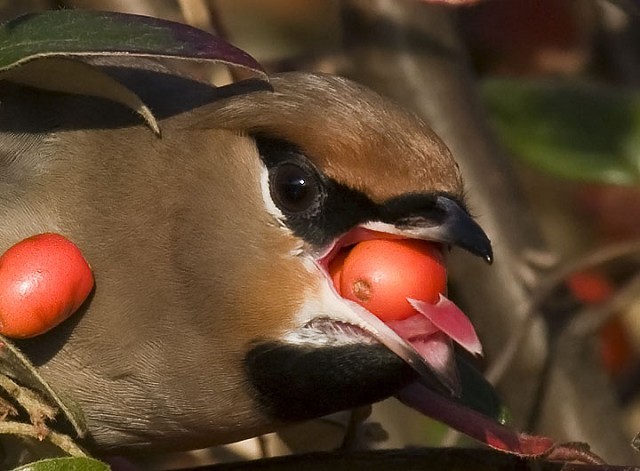
Waxwing, Folkestone, Kent (Photo: Tony Flashman)
Waxwings were still spread far and wide, but the really big flocks were fewer and fewer in number. Dozens of 20s, 30s and 40s were seen, but the largest flocks were 200 at Castleknock (Co. Dublin) on 26th, 230 at Hunslet (West Yorkshire) on 27th, 270 in Belfast (Co. Antrim) on 1st and 200 in Kilmarnock (Ayrshire) on 6th.
In Devon, a Pallas's Warbler was seen at Kenwith (Devon) on 2nd while in Cornwall, single Yellow-browed Warblers were seen at Helston from 26th–4th and Hayle on 29th–6th.

Penduline Tit, Rainham Marshes RSPB, London, Greater (Photo: anon)
The two Penduline Tits at Rainham Marshes (London) were seen, off and on, from 30th–7th, with another found at Slapton Ley (Devon) on 7th the first in the county for almost five years. A Serin remained at Rainham Marshes to 3rd and two more Serins were at Langton Herring (Dorset) on 5th. In County Durham, the Common Rosefinch reappeared in gardens around Whitburn on New Year's Day, and was seen again on 5th (the bird was last seen on 8th December). The review ends with another very decent wintering passerine find in Scotland, a Little Bunting that appeared at Ceres (Fife) on 1st. The bird remained with Reed Buntings until 3rd at least.
Photo of the Week 24th–31st December
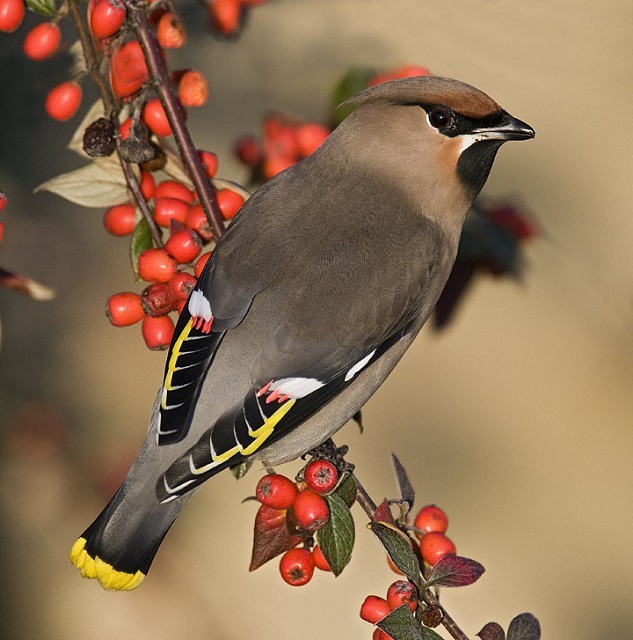
Waxwing, Folkestone, Kent (Photo: Tony Flashman)
A good Waxwing winter continues to delight UK bird photographers, especially now that the southerly spread of these birds has brought them within reach of most. This week, a flock of over 20 Waxwings was well photographed at Folkeston in Kent. Our pick of the photos is Tony Flashman's beautifully lit portrait of a single bird against a backdrop of berries. An 'over the shoulder' pose that shows off all the species' main plumage details, coupled with a strong 'cross' composition, makes for a highly aesthetic image.
Other notable photos

Barn Owl, undisclosed site, Norfolk (Photo: Richard Bedford)

Common Kestrel, private site, Cheshire (Photo: Graham Eaton)
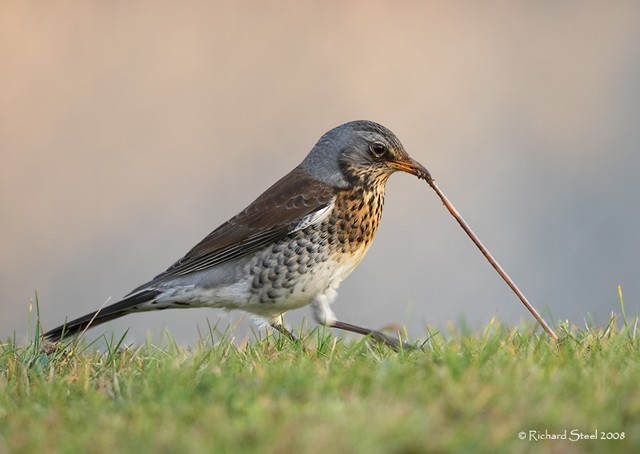
Fieldfare, undisclosed site, Clwyd (Photo: Richard Steel)

Whooper Swan, Martin Mere WWT, Lancashire (Photo: Robert Askew)

Wigeon, Marshside RSPB, Lancashire (Photo: Andy Bate)

Dartford Warbler, Dunwich Heath NT, Suffolk (Photo: Jon Evans)
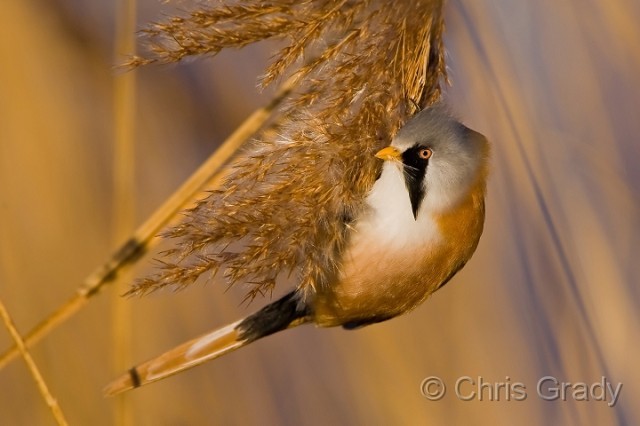
Bearded Tit, Cosmeston Lakes CP, Glamorgan (Photo: Chris Grady)

American Redstart, United States (Photo: Kit Day)

Long-tailed Tit, Hale, Cumbria (Photo: Pauline Greenhalgh)

Blackcap, Exeter, Devon (Photo: Charlie Fleming)

Night Heron, Hythe, Kent (Photo: Jon Evans)

Snow Bunting, South Uist, Outer Hebrides (Photo: Ian Butler)
Photo of the Week 1st–7th January 2009

Red Kite, undisclosed site, Powys (Photo: Chris Grady)
Many bird photographers go into hibernation through the depths of the winter, especially in the UK where light levels can be minimal. This is a pity, as midwinter sunshine provides some of the best-quality light of the year and, even when the sun isn't shining, frost and snow can add great interest value to bird images. Chris Grady's portrait of a Red Kite is a perfect illustration. With frost not only on the bird's perch and background vegetation but also covering the bird itself, it's hard to even look at the image without feeling chilly. The blue cast and dark tones combine to create an even more evocative image.
Other notable photos
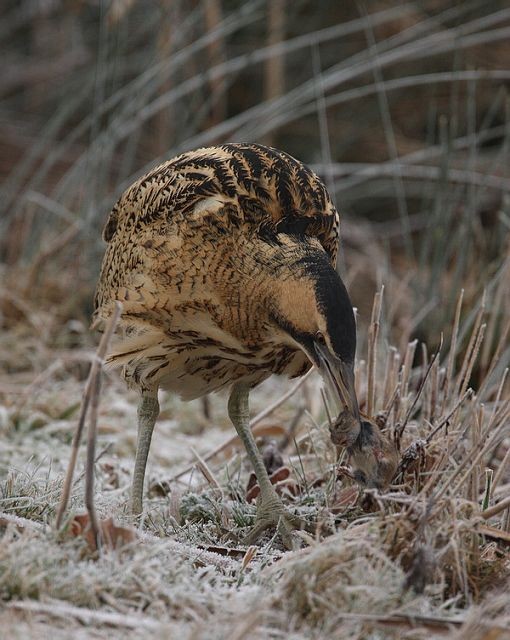
Bittern, Slimbridge WWT, Gloucestershire (Photo: Dean Eades)

Short-eared Owl, Hawling, Gloucestershire (Photo: Mr G Cox)

Lapwing, Lydney, Gloucestershire (Photo: Lewis Thomson)

Dunlin, Salthouse, Norfolk (Photo: Nigel Pye)

Black-capped Kingfisher, India (Photo: Kit Day)

Goldcrest, Slimbridge WWT, Gloucestershire (Photo: Gill)

Goosander, Salford, Manchester, Greater (Photo: A.Dancy)

Oystercatcher, Rhos-on-Sea, Conwy (Photo: Robert Askew)

Pintail, Martin Mere WWT, Lancashire (Photo: Tom Charles)

Fieldfare, Hethersett, Norfolk (Photo: Nigel Pye)
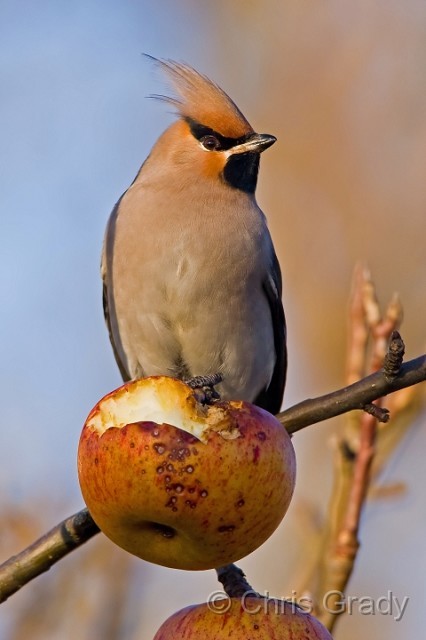
Waxwing, Sully, Glamorgan (Photo: Chris Grady)

Little Grebe, Lydney, Gloucestershire (Photo: Lewis Thomson)
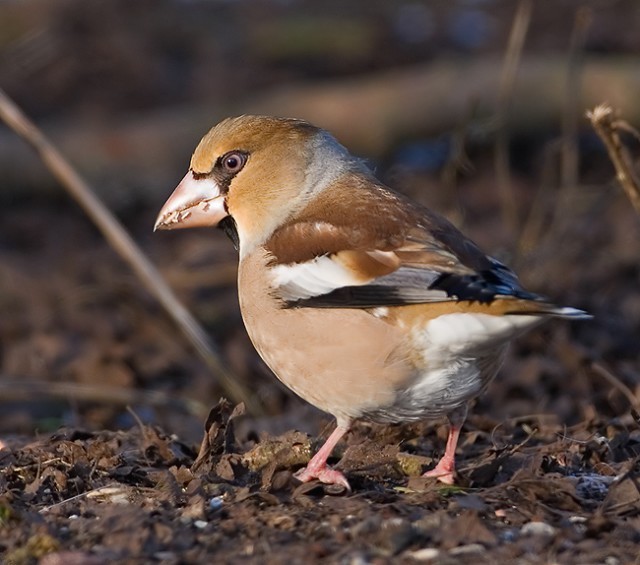
Hawfinch, Cannock Chase, Staffordshire (Photo: Robert Askew)

Great Spotted Woodpecker, private site, Norfolk (Photo: David Whistlecraft)

Black Grouse, undisclosed site, Northumberland (Photo: Margaret Holland)

